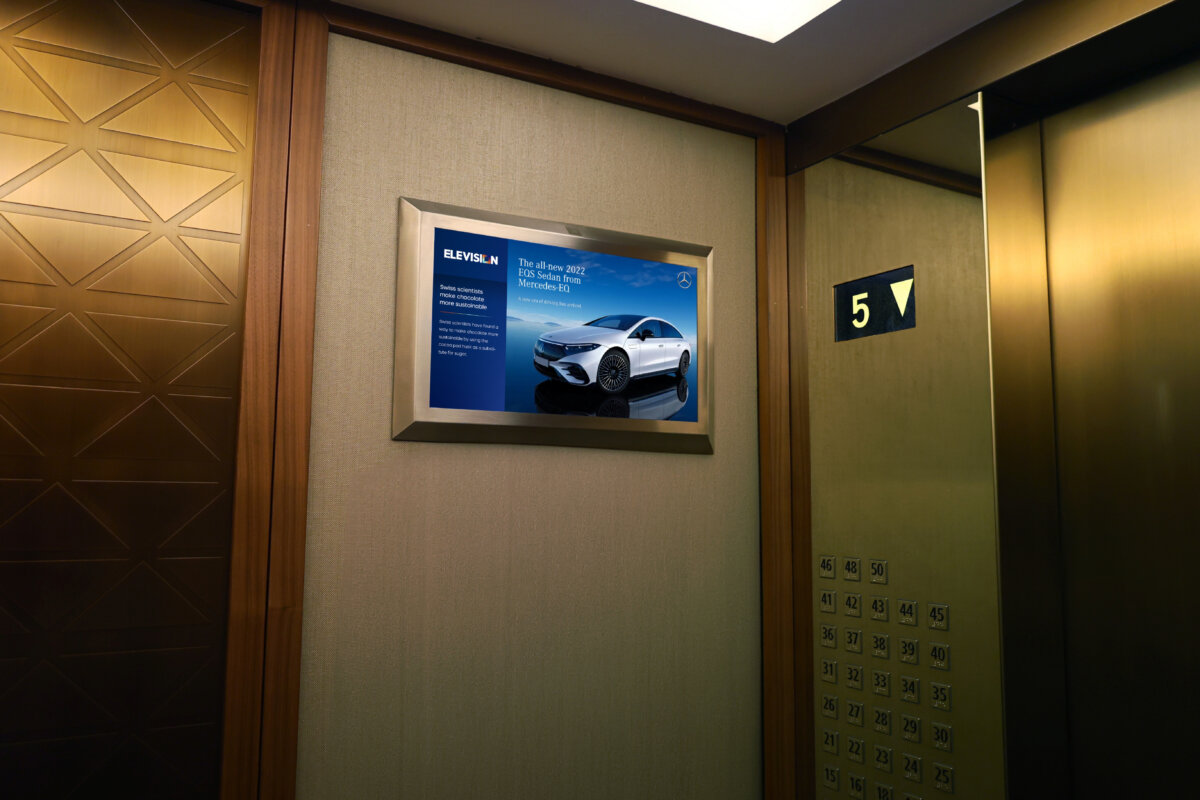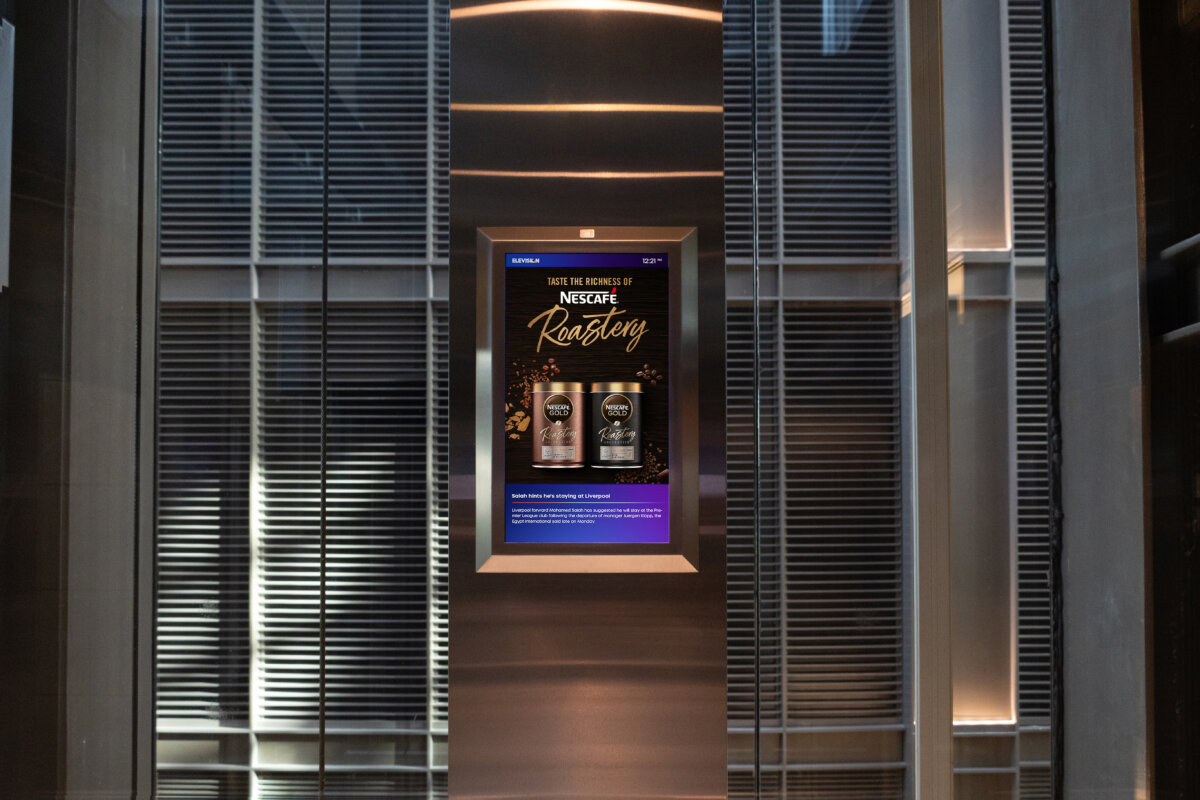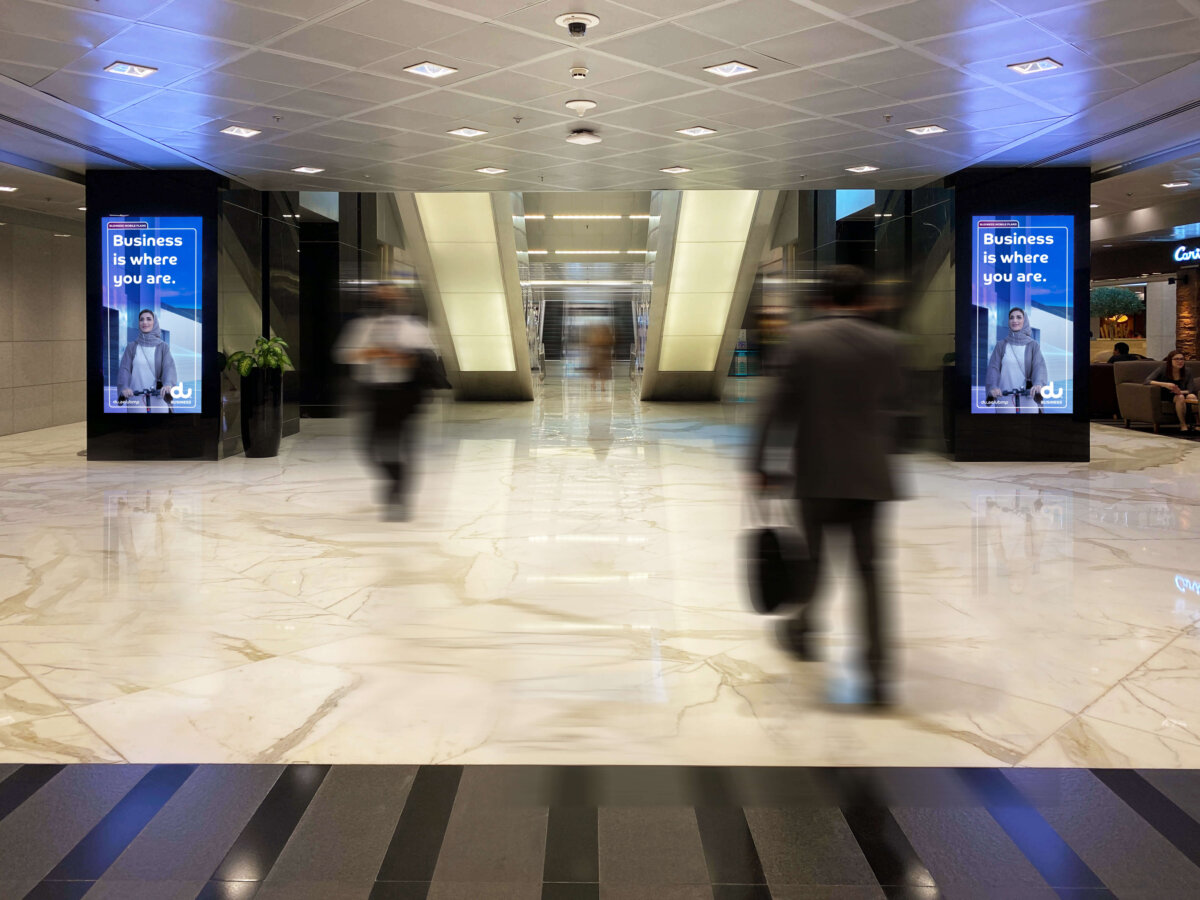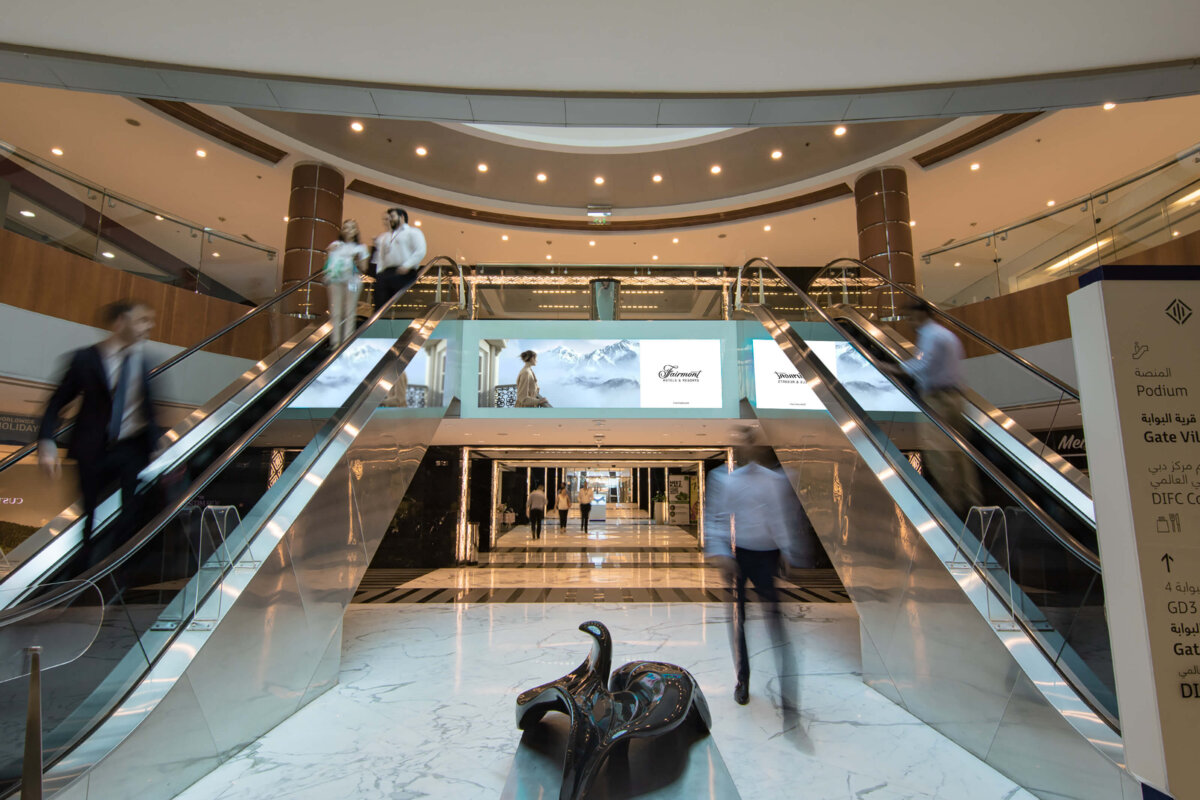| October 11, 2021
How Elevision enhanced its sales strategy and media operations with the Broadsign Platform
With the ability to easily reach large audiences in unique and impactful ways, out-of-home (OOH) advertising has been widely adopted in the United Arab Emirates. Regularly included in major media plans, ad spending for OOH in the region is projected to reach AED 1.6 billion (USD 435 million) in 2024.
Static out-of-home advertising remains the dominant format, providing unparalleled visibility in cities like Dubai and Abu Dhabi, characterized by active highways, high-traffic streets, and vibrant commercial zones. That said, digital out-of-home (DOOH) is rapidly gaining traction in the region. This shift is fuelled by technological advancements that meet advertisers’ demands for more dynamic and eye-catching formats and the increased use of data and analytics to deliver more targeted and contextually relevant ads to intended audiences.
With DOOH ad spending expected to grow annually at a rate of 9.5% by 2028, media owners who digitize their networks early stand to gain a competitive edge. One company leading the digitization of OOH in the UAE is Elevision. Founded in 2011, the DOOH native media owner’s network includes both elevator and large-format screens, totalling 1920 screens across 575 locations. Its combined network provides advertisers with over 850,000 daily viewers, totalling 14.5 million daily impressions.
Advertisers choose Elevision for their premium audiences and locations
Initially, Elevision’s network consisted of elevator screens in high-end residential and commercial buildings in Dubai and Abu Dhabi. Over the last four years, large-format DOOH screens have been added to its network and expanded into premium business districts, including the Dubai International Financial Centre and the Dubai World Trade Centre.
Having built its network across premium areas, Elevision provides advertisers access to affluent demographics, audience segments and profiles. Moreover, the elevator environment offers meaningful targeting at scale. In addition to easily reaching over 500,000 people daily, DOOH elevator screens are a high dwell-time and high-frequency format, efficiently providing high ad recall rates. The ability to combine precise audience targeting with extensive reach has made Elevision the go-to network for connecting with audiences.


Another significant benefit of working with Elevision is the detailed reporting of DOOH campaigns through its custom reporting platform. Launched last year, the platform gives clients access to real-time data to monitor their campaigns’ performance, including ad plays, reach, and impression volume. These real-time insights enable advertisers to remain agile by adjusting their strategies while campaigns are in flight, ensuring business objectives are met.
How Broadsign Guaranteed Campaigns helped optimize their sales strategy and media operations
Before partnering with Broadsign, Elevision had worked with two other digital signage software providers. However, as its network expanded and its content strategy became more complex to meet advertisers’ needs, its existing solution struggled to scale with its growing business. Having found that Broadsign offered a more robust technology stack with advanced features, the company decided to onboard its network onto the Broadsign Platform.
With Broadsign’s CMS, which follows a rule-based approach rather than a playlist-based one, Elevision only requires two administrators to keep its network of over 1,900 screens up and running. One feature it particularly relies on is Broadsign Live, which allows administrators to take real-time action at a distance. With on-demand player polling, they no longer need to wait for the poll period for changes to take effect. The administrators can also capture what’s displayed on their screens in real-time through the player monitoring centre, allowing them to verify that updates or dynamic content are rendered properly.
Elevision also chose Broadsign for its campaign planning and management capabilities, accessible through the Guaranteed Campaigns module, as it’s the only solution on the market to offer real-time inventory visibility, flexible campaign types and an optimization engine all in one platform. With Broadsign’s Enterprise plan, Elevision’s sales team can now view real-time inventory availability and fill rates, as well as projected impressions and CPMs simultaneously when selecting screens. Previously, when the sales team needed to schedule upcoming campaigns, the media operations team would have to manually search screen availability for specific locations within a given timeframe through a spreadsheet.
“The ability to see inventory availability in real-time through Broadsign Guaranteed Campaigns has reshaped the sales team’s pricing activities,” said Eamon Sallam, Chief Operating Officer at Elevision. “They can now see when screens are at 90% fill rate versus 30%, giving them more confidence in how they apply their pricing and discounts. Scheduling features within Guaranteed Campaigns have also provided the sales team with valuable tools to build more tactical proposals to better meet the needs of clients.”
Furthermore, access to flexible campaign types, including share of voice and goal-based (impression, plays, budget) campaigns, has opened inventory to a new set of buyers: programmatic advertisers looking to buy guaranteed impression-based OOH campaigns. With the impression goal campaign type, advertisers can decide how many people they’d like to see their ad. Broadsign’s optimization engine enables campaigns to be dynamically reallocated across the selected inventory, ensuring delivery goals are met despite inventory availability or demand changes.

The Guaranteed Campaigns module has also helped Elevision automate much of its manual campaign management process. Using one platform for campaign planning and management has made the handoff of campaigns between sales and media operations seamless. Once the sales team has booked the campaign, the media operations team can make any necessary changes to the campaigns directly in the platform, like locations, flight dates, and creatives.
Another capability that Elevision relies on is Broadsign’s APIs to feed its custom reporting platform. Broadsign has over 100 active API integrations and is considered the most open platform in the industry, with just about every feature accessible. Using the API integrations from Broadsign’s CMS and Guaranteed Campaigns, Elevision is able to provide advertisers with comprehensive data on campaign performance.
More recently, Elevision worked on enhancing its reporting capabilities for programmatic OOH campaigns as that subset of advertisers had much higher expectations of reporting coming from online environments. Now, the media owner’s reporting dashboard not only shows ad plays, impressions and gross spend for programmatic campaigns but also audience reach and demographic segmentations, providing the same granular reporting as its directly sold campaigns.

What we can expect from Elevision in the coming years
What’s next for Elevision? The company intends to double its network in the next three years. In the UAE, it plans to add more large-format and elevator DOOH screens in another premium business district. It also plans to continue global expansion, having already installed over 100 elevator DOOH screens in a newly built luxury residential community in London.
While still ahead of the curve with real-time reporting, Elevision’s next goal is to close the gap of attribution in OOH. In collaboration with some of its advertisers, the company has begun running case studies to demonstrate how the results from OOH campaigns contribute to campaign objectives.

